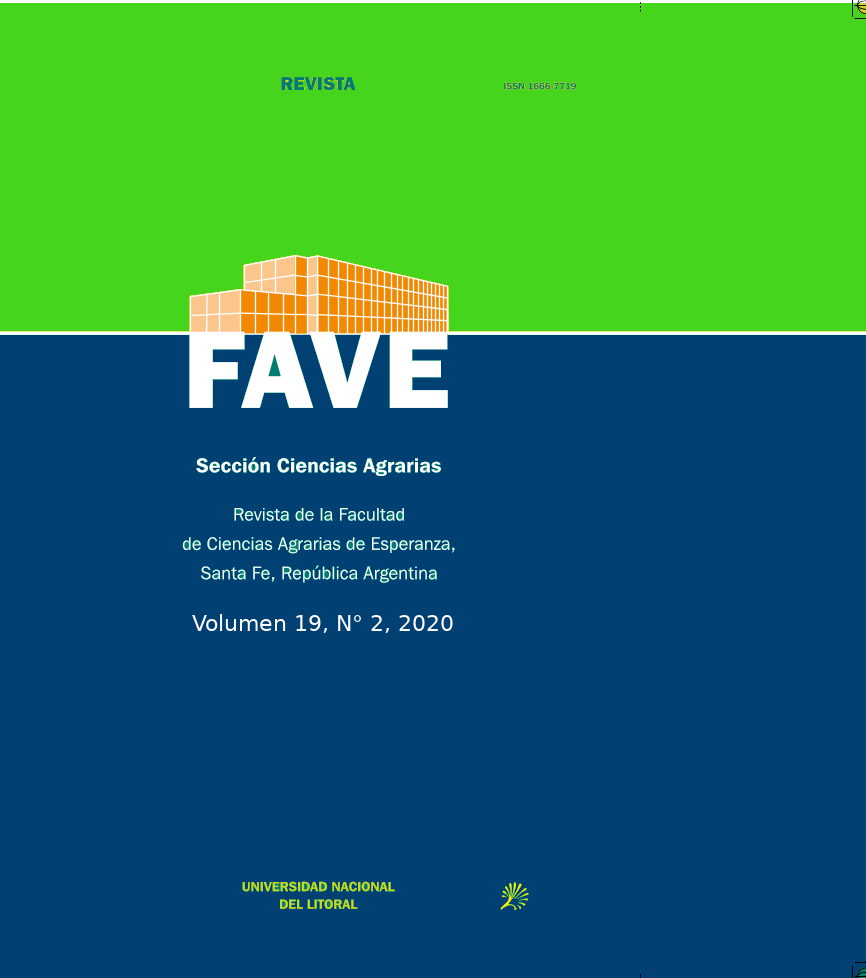Effect of crop sequence on water runoff and soil and herbicides losses.
DOI:
https://doi.org/10.14409/fa.v19i2.9750Keywords:
agricultural systems, runoff, herbicides, precipitationsAbstract
Assessing agricultural systems effects on the environment is essential to minimize any negative impact. This study evaluates water, sediments and herbicides losses by runoff on different crop sequences due to a precipitation event following spraying of herbicides. Measurements were conducted in natural-rainfall runoff plots at INTA Paraná. Crop sequences were: soybean monoculture (S), soybean monoculture with wheat as cover crop (CC-S), and both wheat / soybean as cash crops (T / S). All sequences were sprayed with glyphosate and clethodim before soybean ́s sowing. Compared to the amount applied, the proportion of glyphosate and clethodim in runoff ranged between 5.3-13.5% and 2.6-5.9%, respectively. Losses of soil and AMPA (concentration) were greatest for S. The results highlight the importance of checking meteorological forecast conditions before spraying of herbicides to reduce nonpoint pollution of water bodies.

















